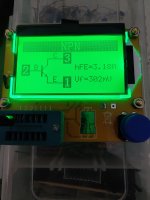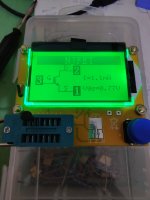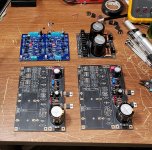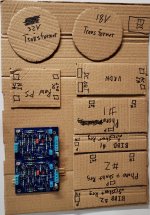There will be a surge as C1 will be charging so don't be taken aback if the CC protect indication turns red for a while.
Sucess! 36.78 volts with a 2.2K resisitor in the output.
Max adjustable shunt reg output you mean?
That's awesome, what make is it?
Its a very cheap general purpose component tester called M-Tester but has its quirks. Thinks that a K170 JFET is a 3.18 Million HFE NPN Transistor 😀
I think I've heard of those, might have to look into one.
Success on regulator #2, adjusted both to 35VDC.
Success on regulator #2, adjusted both to 35VDC.
a Technics SL-1200GR with no less than an Audio Technica VM540ML cartridge
That is my setup. I think the SL-1200GR could play well with more expensive MC cartridges, probably up to $1K or so, beyond that the tail may be wagging the dog.
Here is how I plan to place the boards in the cabinet. I've ordered torroid shield covers for the transformers and plan to place a partition between the power supplies and low level boards.
A PSU board's AC in next to phono signal in is precarious for hum interference. Especially if you will use MC cartridge. Its not only the transformers themselves but the AC power wiring emitting a field too. Primary and secondary. Metal partitions are good in stopping RFI (not when aluminum) but not that good for 60Hz fields. Distancing is more effective. Better rearrange with the Wayne's board at the back and anything phono input related, including RCAs, most away from anything AC power. You can even part the 1.3S sections from the main phono boards and mount them against vertical panels of the box to make extra space. Turn the phono boards for I/O facing the back, allowing In connectors to trafos max distance. Shielded coaxial signal cabling is a must too. Twisted pair signal cables are passable in two box builds mainly. AC cables should be tightly twisted and neatly tacked away along the chassis corners behind the trafos like heaters cabling in tube preamps.
That is my setup. I think the SL-1200GR could play well with more expensive MC cartridges, probably up to $1K or so, beyond that the tail may be wagging the dog.
Indeed.
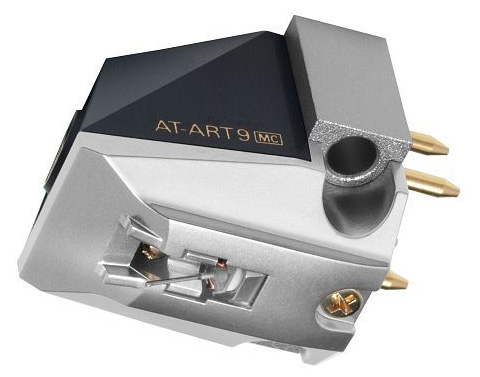
Check these out. The ART9 is on it's way out. Maybe a firesale will occur.
AT-ART9XA|アナログ|株式会社オーディオテクニカ
(Air core, no magnet) .2mv
AT-ART9XI|アナログ|株式会社オーディオテクニカ
(Magnet, .5mv)
Think the UFSP can do .2mv?
AT-ART9XA|アナログ|株式会社オーディオテクニカ
(Air core, no magnet) .2mv
AT-ART9XI|アナログ|株式会社オーディオテクニカ
(Magnet, .5mv)
Think the UFSP can do .2mv?
I have seen those in their Japanese site and look very interesting. Japanese manufacturers habitually launch domestically first or even make specialized models for Japan. Proven ART9 can be found at a good price cut from some dealers right now. Making it a super bargain. I have witnessed the phono doing Dynavector Te Kaitora Rua 0.26mV phenomenally well and 0.2mV isn't terribly lower than that.
But when there is a 0.5mV alternative its better. Strengthens signal output and SNR very audibly. Hum dangers are also kept better at bay. Those electrical gains can dominate delicate engine materials advantages of a lower output sister model in my opinion. There is an expensive high ratio step up transformers to tube MM stages culture in Japan that super low output cartridges are mainly made for.
But when there is a 0.5mV alternative its better. Strengthens signal output and SNR very audibly. Hum dangers are also kept better at bay. Those electrical gains can dominate delicate engine materials advantages of a lower output sister model in my opinion. There is an expensive high ratio step up transformers to tube MM stages culture in Japan that super low output cartridges are mainly made for.
Not jumping ship here but I believe the SL1200G comes with a SMPS. Could it benefit from an L-Adapter. They claim it is not an issue but I certainly don't know.
Don
Don
- Home
- Source & Line
- Analogue Source
- Simplistic NJFET RIAA


